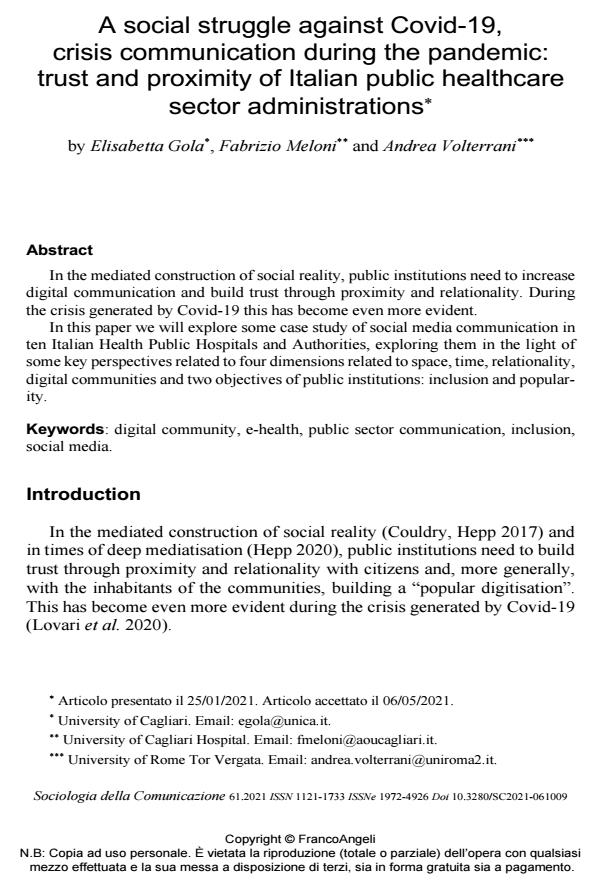A social struggle against Covid-19, crisis communication during the pandemic: trust and proximity of Italian public healthcare sector administrations
Journal title SOCIOLOGIA DELLA COMUNICAZIONE
Author/s Elisabetta Gola, Fabrizio Meloni, Andrea Volterrani
Publishing Year 2021 Issue 2021/61
Language English Pages 19 P. 127-145 File size 615 KB
DOI 10.3280/SC2021-061009
DOI is like a bar code for intellectual property: to have more infomation
click here
Below, you can see the article first page
If you want to buy this article in PDF format, you can do it, following the instructions to buy download credits

FrancoAngeli is member of Publishers International Linking Association, Inc (PILA), a not-for-profit association which run the CrossRef service enabling links to and from online scholarly content.
In the mediated construction of social reality, public institutions need to in-crease digital communication and build trust through proximity and relationality. During the crisis generated by Covid-19 this has become even more evident. In this paper we will explore some case study of social media communication in ten Italian Health Public Hospitals and Authorities, exploring them in the light of some key perspectives related to four dimensions related to space, time, relational-ity, digital communities and two objectives of public institutions: inclusion and popularity.
Keywords: digital community, e-health, public sector communication, inclusion, social media.
Elisabetta Gola, Fabrizio Meloni, Andrea Volterrani, A social struggle against Covid-19, crisis communication during the pandemic: trust and proximity of Italian public healthcare sector administrations in "SOCIOLOGIA DELLA COMUNICAZIONE " 61/2021, pp 127-145, DOI: 10.3280/SC2021-061009